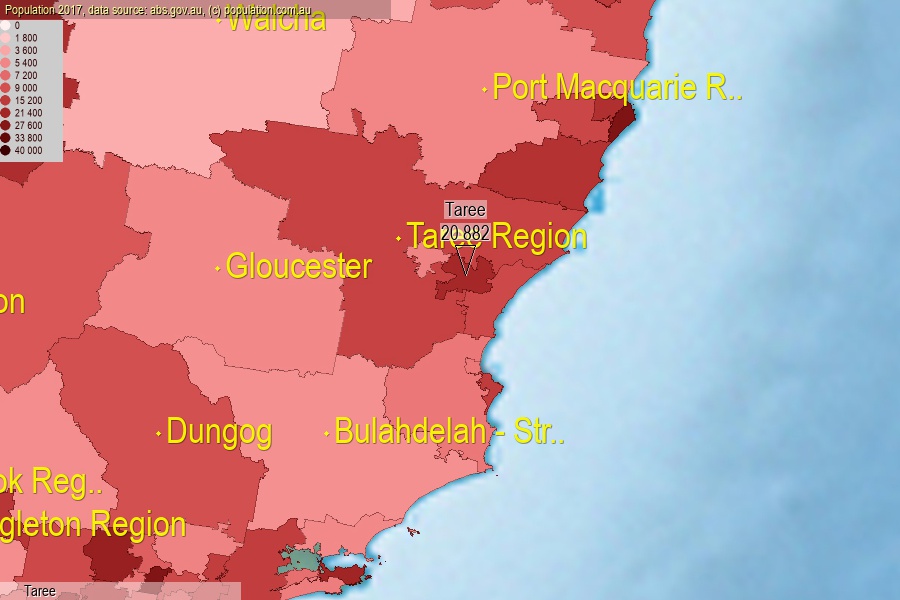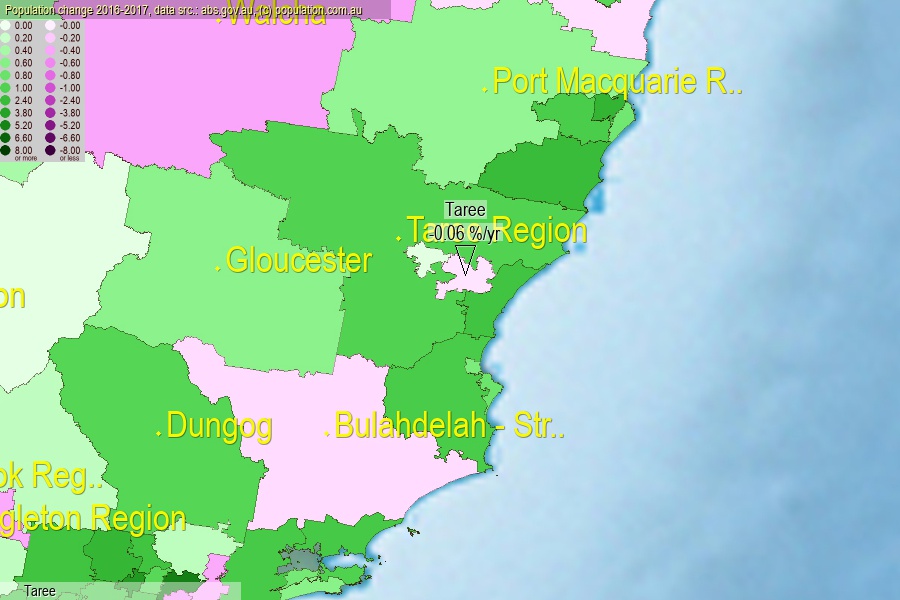 population.com.au
population.com.auLast official estimated population of Taree (as Statistical Area Level 2) was 20 882 people (on 2017-06-30)[2]. This was 0.08% of total Australian population and 0.262% of NSW population. Area of Taree is 125.10 km², in this year population density was 166.92 p/km² . If population growth rate would be same as in period 2016-2017 (-0.06%/yr), Taree population in 2025 would be 20 786. [0]



Click to enlarge. Taree is located in the center of the images.
Population [people], population density [p./km²] and population change [%/year] [2]
View borders » (new window) [4]
[1991-1992] +0.26 %/Yr.
[1992-1993] +0.14 %/Yr.
[1993-1994] +0.36 %/Yr.
[1994-1995] -0.34 %/Yr.
[1995-1996] -0.36 %/Yr.
[1996-1997] +0.34 %/Yr.
[1997-1998] +0.39 %/Yr.
[1998-1999] +0.62 %/Yr.
[1999-2000] +0.08 %/Yr.
[2000-2001] +0.14 %/Yr.
[2001-2002] -0.16 %/Yr.
[2002-2003] +0.03 %/Yr.
[2003-2004] -0.02 %/Yr.
[2004-2005] -0.32 %/Yr.
[2005-2006] -0.34 %/Yr.
[2006-2007] -0.18 %/Yr.
[2007-2008] +0.10 %/Yr.
[2008-2009] +0.70 %/Yr.
[2009-2010] +1.02 %/Yr.
[2010-2011] +1.39 %/Yr.
[2011-2012] +0.08 %/Yr.
[2012-2013] +0.12 %/Yr.
[2013-2014] +0.03 %/Yr.
[2014-2015] -0.03 %/Yr.
[2015-2016] +0.06 %/Yr.
[2016-2017] -0.06 %/Yr.
[0] Calculated with linear interpolation from officially estimated population
[1] Read more about SA2 and Australian Statistical Geography Standard (ASGS) on abs.gov.au
[2] Population data from Australian Bureau of Statistics (Population and density: 2017; change: 2016-2017)
[3] Digital Boundaries: Australian Statistical Geography Standard (ASGS) 2016.
[4] Border coordinates are simplifyed using Ramer-Douglas-Peucker algorithm.